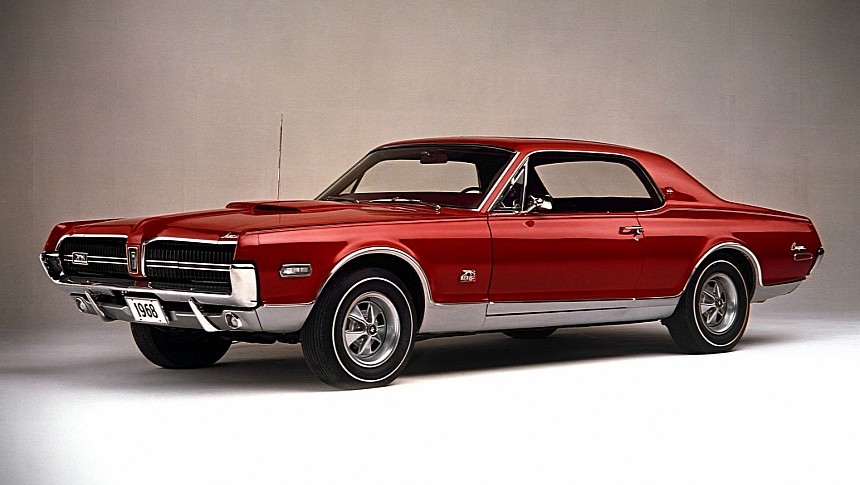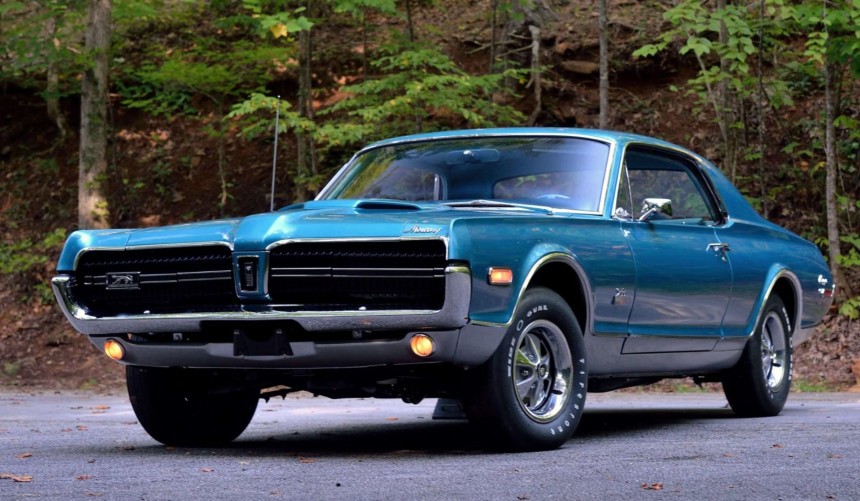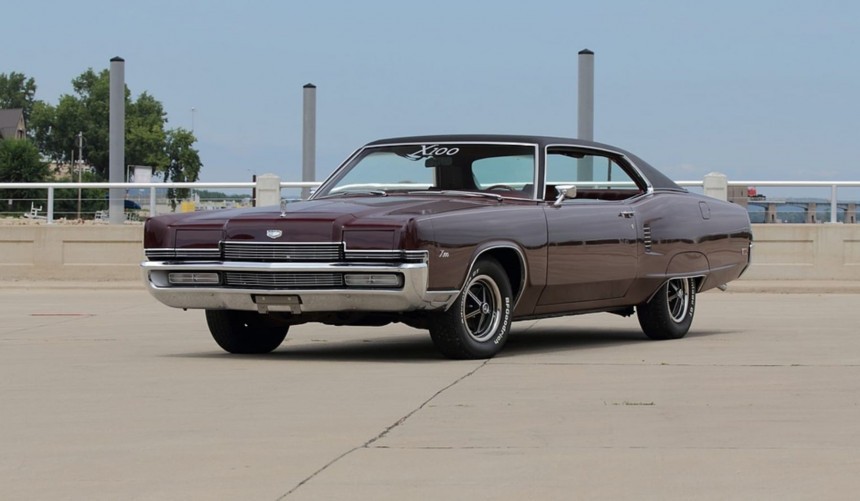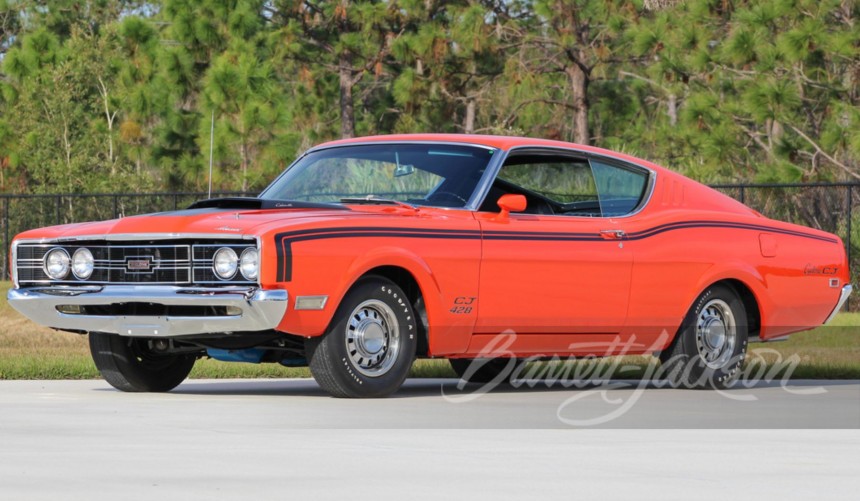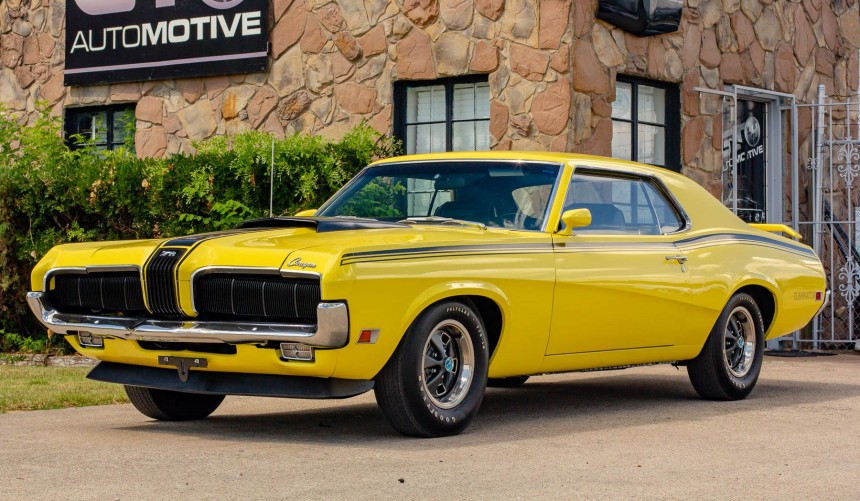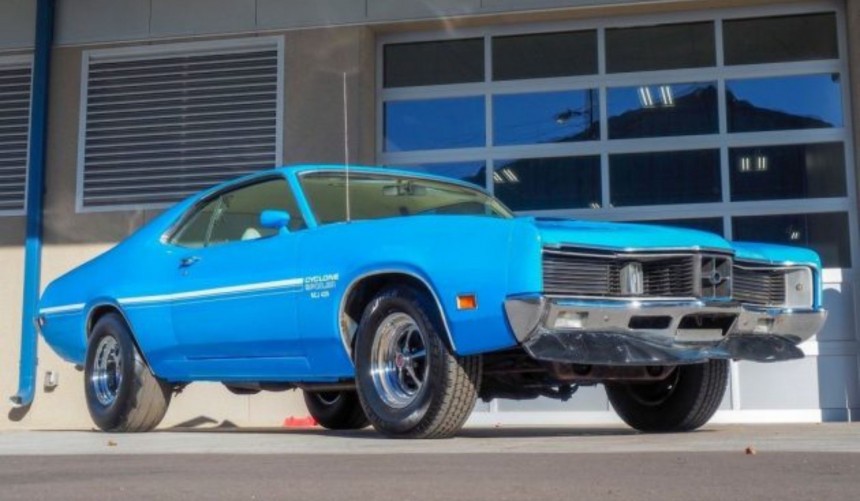When enthusiasts talk about the most notorious brands associated with the classic muscle cars of the 1960s and 1970s, Mercury rarely pops up. Nevertheless, the now-defunct Ford division rolled out some impressive performance models that deserve to be remembered and celebrated.
Mercury was founded in the fall of 1938 by Henry Ford's only son, Edsel. The idea behind its creation was to bridge the gap between the Ford and Lincoln brands by offering a new line of medium-priced models.
For the next six decades, Mercury was a major rival for GM's Buick and Oldsmobile divisions, as well as for the Chrysler Corporation's namesake brand.
However, by the start of the 21st century, Mercury needed help to attract new buyers. Despite efforts to modernize its image, sales continued to drop, and in 2011, it shut its doors for good.
Although Mercury developed many excellent models throughout its history, the most impressive were introduced during the late-1960s and early-1970s when muscle cars ruled the roads.
When parent company Ford introduced the Mustang in 1964, it unexpectedly revolutionized the American automotive industry.
Since the Mustang exceeded even the most optimistic predictions in terms of sales and the pony car segment was booming, Mercury decided to answer back in 1967 with an even more European-styled, upscale version of the 'Stang called Cougar.
As expected, the Cougar was a marketing success, prompting Mercury to improve it for the following model year - mainly in the engine department.
The 1968 Cougar could be had with a wide range of options, but the GT-E package was the most impressive. When choosing these three letters on the options sheet, buyers received a quad exhaust, lower body chrome trims, 7.0 litre GT-E badges, a redesigned front grille, and power front disc brakes.
But the most impressive part of the GT-E package was the race-derived 390-hp 427-ci (7.0 liter) side-oiler linked to a three-speed automatic.
Mercury only built 357 427-equipped GT-Es before replacing the side-oiler with the newly introduced 335-hp 428 Cobra Jet.
1969 Mercury revived the Marauder nameplate, slapping it on a subtly restyled two-door version of the Marquis.
Since the market demanded larger, more powerful V8s, Mercury decided that a high-performance version would be a perfect way to boost the image of the new Marauder.
Therefore, the carmaker launched the X-100, which became the most potent and luxurious member of the new model line. Cosmetic enhancements included Kelsey-Hayes wheels, fender skirts, and a choice between lounge seats, a bench seat, or two bucket seats, but the most remarkable feature was hidden under the car's colossal hood.
Instead of the standard Marauder's 390-ci (6.4 liters) FE, the X-100 received a 360-hp 429-ci (7.0 liters) V8 equipped with a four-barrel carb, 10.5:1 compression, and a three-speed SelectShift auto.
According to a test conducted by Car and Driver, the rabid land yacht could sprit to 60 mph (97 kph) from a standstill in an impressive 7.8 seconds.
In 1968, Mercury "promoted" the redesigned Cyclone from a sub-series of the intermediate Comet to an individual model. And, since the 1969 version was essentially a carryover in terms of styling, the division's executives decided to make it more appealing by adding a high-performance special edition slotted above the popular GT.
As its name implies, the car was powered by the new 428-ci (7.0 liters) Cobra Jet version of the FE big block equipped with a four-barrel carb and rated at 335 hp.
Apart from the engine, the Cyclone Cobra Jet came with a blacked-out grille, dual exhausts, a 3:50:1 rear end, chromed engine parts (aka engine dress-up kit), unique hood stripes, a competition handling package, and an optional Ram Air induction.
Capable of quarter-mile runs in the 13.8-second region, the Cyclone Cobra Jet was one of the fastest factory-built intermediates in 1969, and today, it's one of the most sought-after Mercury muscle cars.
Though Mercury was initially reluctant to join the muscle car craze, the rising sales figures of their rivals prompted them to jump on board in 1969.
We already covered the high-powered GT-E of 1969, but that year, the Cougar lineup also welcomed another high-performance model called Eliminator.
Conceived as a classy alternative to the Mustang Mach 1 and Boss 302, the Eliminator was the flashiest of all Cougars, thanks to its vivid color choices and contrasting decals. It also had the most exciting engine lineup, which included the Boss 302 borrowed from the Mustang or the 428 Cobra Jet and Super Cobra Jet FE big blocks.
Unless it was powered by the 428 CJ or SCJ, the Eliminator wasn't as impressive as the 1969 GT-E when it came to performance. Still, with 4,518 units sold during its two-year run, it became one of Mercury's best-selling performance models, and it went down in history as the upscale brand's most flamboyant car.
Although the Cobra Jet model was discontinued in 1970, Mercury made sure that the freshly redesigned Cyclone remained a high-powered intermediate, offering a variety of performance engines.
Instead of the anemic 302 that came standard a year earlier, the base Cyclone model was now powered by the 360-hp 429 equipped with a four-barrel carb and dual exhausts - the same setup used in the 1969 Marauder X-100.
Further up the ladder was the GT, which was more focused on style rather than performance. It came with deluxe features such as a full-length console, twin racing mirrors, bucket seats, hide-away headlights, three pod tail lights, and unique decals. Under the hood, the standard engine was a 351 Cleveland big block with a two-barrel carb and a three-speed manual transmission.
The third Cyclone model available in 1970 was the performance-oriented Spoiler. This one came with a potent 370-hp 429 Cobra Jet with a Rochester Quadrajet 715-cfm four-barrel and Ram Air induction as standard.
However, both the GT and the Spoiler could be had with the optional 429 Super Cobra Jet. Equipped with high-performance components such as a four-bolt-main block, forged pistons and conrods, a hotter cam, and a larger Holley 780-cfm four-barrel. It was conservatively rated at 375 hp and turned the Cyclone into a tire-shredding beast.
For the next six decades, Mercury was a major rival for GM's Buick and Oldsmobile divisions, as well as for the Chrysler Corporation's namesake brand.
However, by the start of the 21st century, Mercury needed help to attract new buyers. Despite efforts to modernize its image, sales continued to drop, and in 2011, it shut its doors for good.
Although Mercury developed many excellent models throughout its history, the most impressive were introduced during the late-1960s and early-1970s when muscle cars ruled the roads.
1968 Mercury Cougar GT-E 427
Since the Mustang exceeded even the most optimistic predictions in terms of sales and the pony car segment was booming, Mercury decided to answer back in 1967 with an even more European-styled, upscale version of the 'Stang called Cougar.
As expected, the Cougar was a marketing success, prompting Mercury to improve it for the following model year - mainly in the engine department.
The 1968 Cougar could be had with a wide range of options, but the GT-E package was the most impressive. When choosing these three letters on the options sheet, buyers received a quad exhaust, lower body chrome trims, 7.0 litre GT-E badges, a redesigned front grille, and power front disc brakes.
But the most impressive part of the GT-E package was the race-derived 390-hp 427-ci (7.0 liter) side-oiler linked to a three-speed automatic.
Mercury only built 357 427-equipped GT-Es before replacing the side-oiler with the newly introduced 335-hp 428 Cobra Jet.
1969 Mercury Marauder X-100
Since the market demanded larger, more powerful V8s, Mercury decided that a high-performance version would be a perfect way to boost the image of the new Marauder.
Therefore, the carmaker launched the X-100, which became the most potent and luxurious member of the new model line. Cosmetic enhancements included Kelsey-Hayes wheels, fender skirts, and a choice between lounge seats, a bench seat, or two bucket seats, but the most remarkable feature was hidden under the car's colossal hood.
Instead of the standard Marauder's 390-ci (6.4 liters) FE, the X-100 received a 360-hp 429-ci (7.0 liters) V8 equipped with a four-barrel carb, 10.5:1 compression, and a three-speed SelectShift auto.
According to a test conducted by Car and Driver, the rabid land yacht could sprit to 60 mph (97 kph) from a standstill in an impressive 7.8 seconds.
1969 Mercury Cyclone Cobra Jet
As its name implies, the car was powered by the new 428-ci (7.0 liters) Cobra Jet version of the FE big block equipped with a four-barrel carb and rated at 335 hp.
Apart from the engine, the Cyclone Cobra Jet came with a blacked-out grille, dual exhausts, a 3:50:1 rear end, chromed engine parts (aka engine dress-up kit), unique hood stripes, a competition handling package, and an optional Ram Air induction.
Capable of quarter-mile runs in the 13.8-second region, the Cyclone Cobra Jet was one of the fastest factory-built intermediates in 1969, and today, it's one of the most sought-after Mercury muscle cars.
1969–1970 Mercury Cougar Eliminator
We already covered the high-powered GT-E of 1969, but that year, the Cougar lineup also welcomed another high-performance model called Eliminator.
Conceived as a classy alternative to the Mustang Mach 1 and Boss 302, the Eliminator was the flashiest of all Cougars, thanks to its vivid color choices and contrasting decals. It also had the most exciting engine lineup, which included the Boss 302 borrowed from the Mustang or the 428 Cobra Jet and Super Cobra Jet FE big blocks.
Unless it was powered by the 428 CJ or SCJ, the Eliminator wasn't as impressive as the 1969 GT-E when it came to performance. Still, with 4,518 units sold during its two-year run, it became one of Mercury's best-selling performance models, and it went down in history as the upscale brand's most flamboyant car.
1970 Mercury Cyclone GT/Spoiler 429 Super Cobra Jet
Instead of the anemic 302 that came standard a year earlier, the base Cyclone model was now powered by the 360-hp 429 equipped with a four-barrel carb and dual exhausts - the same setup used in the 1969 Marauder X-100.
Further up the ladder was the GT, which was more focused on style rather than performance. It came with deluxe features such as a full-length console, twin racing mirrors, bucket seats, hide-away headlights, three pod tail lights, and unique decals. Under the hood, the standard engine was a 351 Cleveland big block with a two-barrel carb and a three-speed manual transmission.
The third Cyclone model available in 1970 was the performance-oriented Spoiler. This one came with a potent 370-hp 429 Cobra Jet with a Rochester Quadrajet 715-cfm four-barrel and Ram Air induction as standard.
However, both the GT and the Spoiler could be had with the optional 429 Super Cobra Jet. Equipped with high-performance components such as a four-bolt-main block, forged pistons and conrods, a hotter cam, and a larger Holley 780-cfm four-barrel. It was conservatively rated at 375 hp and turned the Cyclone into a tire-shredding beast.
